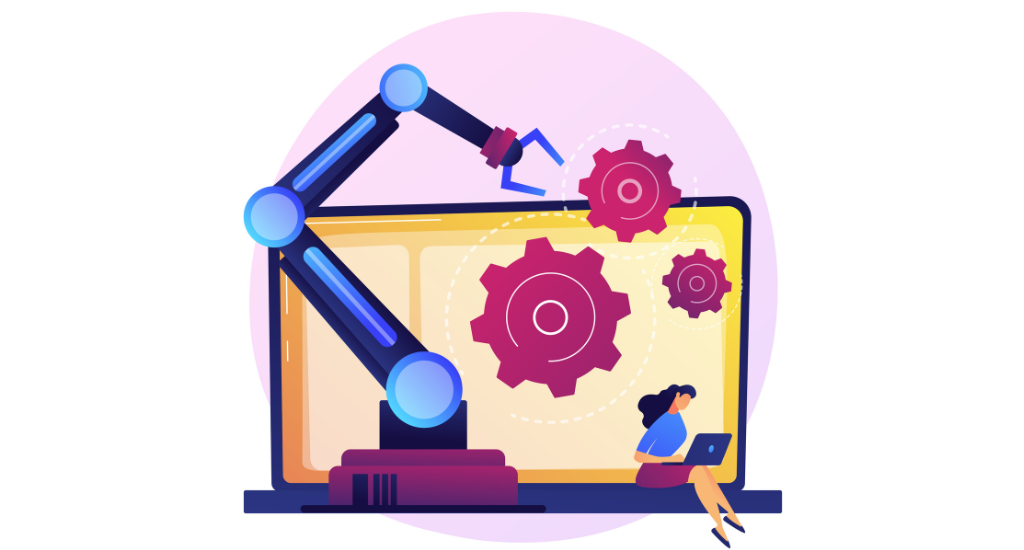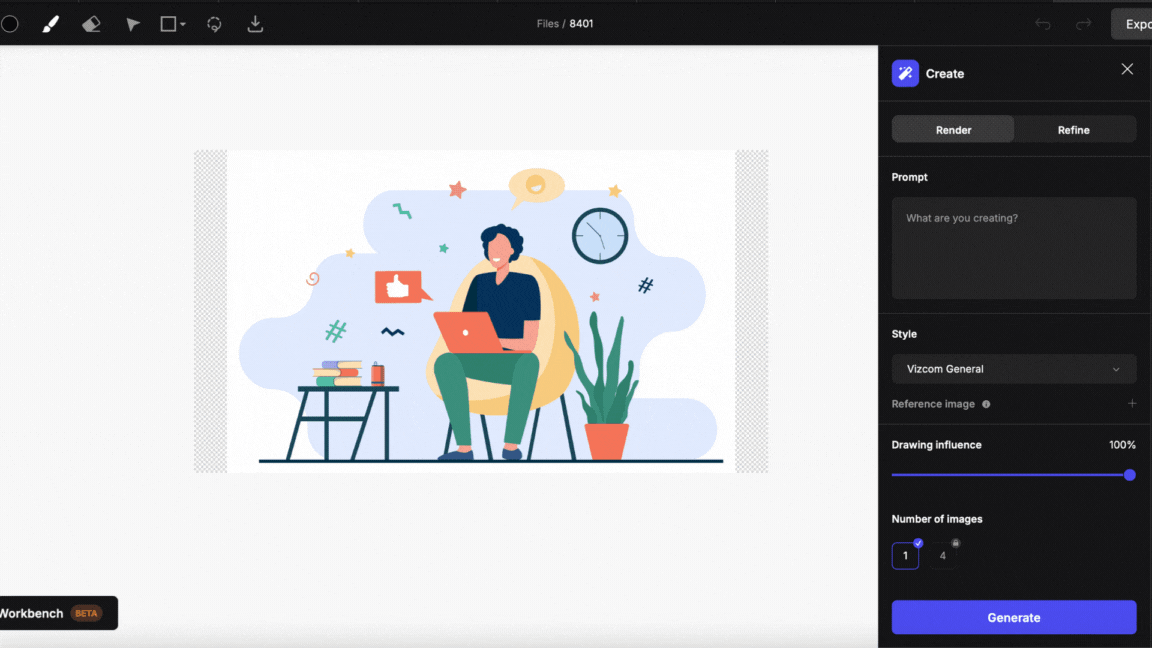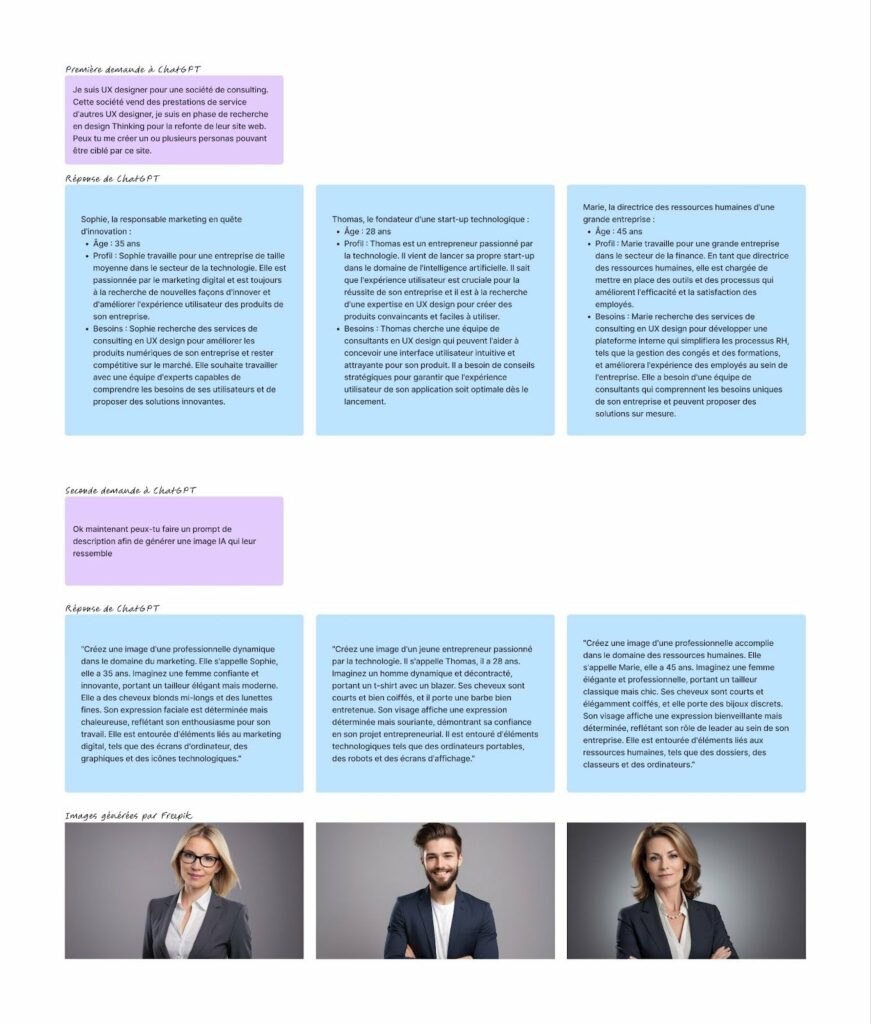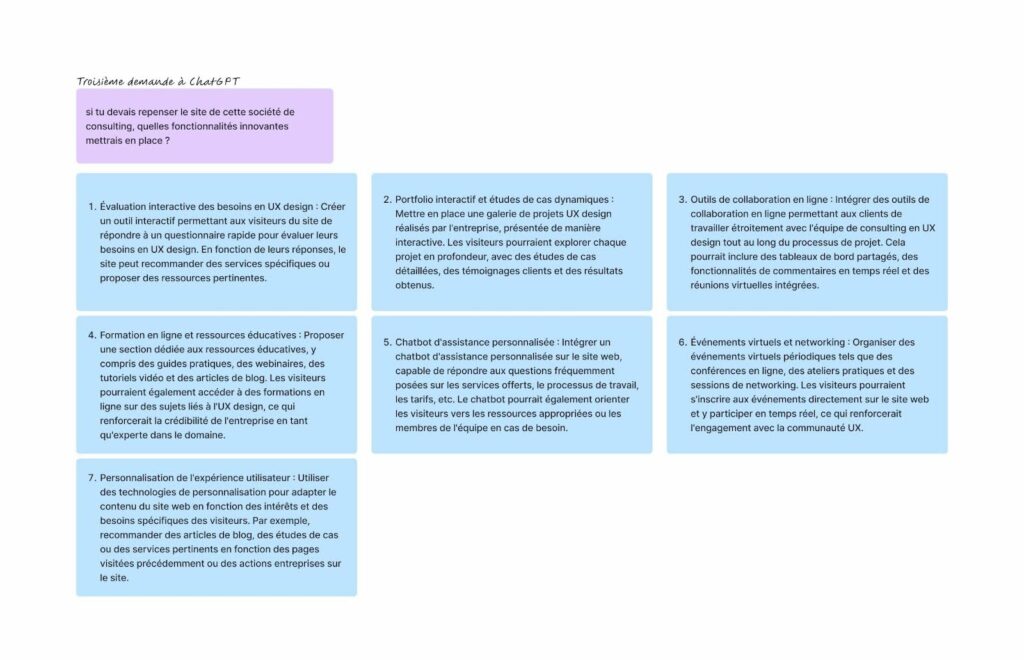In the world of design, artificial intelligence (AI) is emerging as a revolutionary force, offering new and exciting possibilities for designers. From generating concepts to optimizing creative processes, AI tools are transforming the way we approach design. In this article, we'll explore how to integrate these innovative tools into our creative routine to push the boundaries of design.
AI tools ⚒️
- Chat GPT : a generative language model that can be used to summarize one-on-one interviews, create concise slides, generate ideas, and much more. Its adaptability makes it a versatile tool for designers.
- uizard : AI-powered mockup creation tool. It allows designers to transform sketches into interactive models in just a few clicks. This makes the prototyping process easier.
- Usegalileo : possibility of creating models directly importable on design platforms such as Figma. Its intuitive use and advanced features make it a valuable ally for designers.
- Freepik : Image creation tool based on text or sketches. It allows designers to turn ideas into images quickly and efficiently. This adds a visual dimension to their concepts.
- Recraft : vector image creation and editing tool. It offers advanced features for manipulating and customizing graphic elements. It then allows designers to bring their ideas to life with precision.
- Vizcom : graphic tool to transform a flat design illustration into a 3D image.
Natively integrated tools
- Figjam : collaboration solution integrated into Figma, equipped with native AI for creating templates. Its seamless integration allows teams to design together in real time, pushing the boundaries of collective creativity.
- Notion : Notion stands out with its unique AI integration. Unlike other tools, Notion's AI is directly accessible in its text editor, allowing easy manipulation of the generated content. In the future, Notion plans to further leverage this AI to optimize project management and team knowledge bases, providing significant added value in managing a UX project.
Which tool for which stage of Design Thinking? 🤔
-
Empathy Phase
Chat GPT can be used for summarize the results of an audit ergonomic for example. It can also be used to concisely present key findings and recommendations.
-
Definition phase
During this definition phase, ChatGPT can help to write an exploratory questionnaire or a user interview grid.
During these interviews, AI can be used to transcribe individual interviews in text. This facilitates the subsequent analysis of the data or even their conservation (less cumbersome than a video file).
Subsequently, the use of AI can help to summarize individual interviews in concise presentations. This helps to gain a quick understanding of user needs and concerns.
For defining personas, ChatGPT can become support for their creation. Thanks to the training it has had on previous subjects, the engine will be able to provide interesting research angles. In addition to ChatGPT data, image creation tools can make it possible to give a physical appearance to personas.
For example, if we apply these main principles to a website of a consulting company:
-
Ideation phase
To iterate on our project, ChatGPT can be used to generate innovative ideas and concepts. Andn providing prompts and suggestions, it can stimulate creativity and the exploration of new design avenues.
uizard et Usegalileo can be used for quickly generate first model ideas. They thus offer an effective way to visually explore different potential solutions.
If we return to our previous example, we want to iterate around the functionalities to be implemented on the website:
-
Prototype phase
AI tools, like ChatGPT, can be used to rework the user test verbatims and refine prototypes based on user feedback.
-
Test phase
To enable faster processing of user tests carried out, ChatGPT can be used to synthesize the results by identifying trends and patterns in user feedback. As a result, this would facilitate the analysis and iteration of prototypes.
Go further in the integration of AI tools 💡
To support users in integrating AI tools into their solutions, it is essential to understand the specific needs and expectations of each industry. For example, the transcription of telephone dialogues between a customer and a telephone advisor can be facilitated using communication tools. speech-to-text. On the other hand, integrating AI into a ChatBot can improve the user experience on tourism sites by providing personalized and efficient assistance.
The limits of design accompanied by AI 🙅♀️
Artificial intelligence tools, despite their many advantages, are also subject to several important limitations and ethical considerations:
-
Prompt Compliance
Prompts must conform to machine requests to obtain relevant and accurate results. This means that the instructions given to the AI must be clear and specific. This can sometimes limit flexibility and spontaneity in interaction with the tool.
-
Lack of transcription of emotions
AI tools, such as ChatGPT, are not capable of transcribing human emotions. Therefore, they can lack nuance in their understanding and response to emotional stimuli. This can be an obstacle in interactions, where emotions are important.
-
Obligation to provide a response
One of the limitations of AI tools is thatthey must always provide an answer, even if it is false or inaccurate. Sometimes this can lead to biased or erroneous results. This is often the case when the AI does not have enough information or context to generate a relevant response. Additionally, the lack of hierarchy in the information can lead to random selection of answers. So, this can affect the overall quality of the results.
-
Ethical boundaries
AI tools raise important ethical questions, in particular with regard to integrity, confidentiality and transparency. It is crucial that developers and users ensure that tools meet the highest ethical standards. It is necessary to avoid any abusive or harmful use of data, ensuring that the decisions made by AI are fair and equitable.
-
Data Privacy
Using AI tools often involves collecting and processing large amounts of data. This raises legitimate privacy and security concerns. It is essential that businesses and organizations have robust data protection measures in place to ensure that user information is treated securely and complies with current regulations (such as GDPR in Europe, etc.).
-
Ecological impact
AI models require significant amounts of data for training. This can lead to high energy consumption. To date, thehe data centers and infrastructure needed to power AI algorithms have a significant impact on the environment, particularly in terms of greenhouse gas emissions. Despite the undeniable benefits, AI raises concerns about its environmental sustainability, prompting the exploration of more eco-friendly solutions for its development and deployment.
Conclusion
Although AI tools offer many possibilities, it is important to recognize and consider their limits et their ethical and ecological implications.
By adopting a thoughtful and responsible approach, it is possible to maximize the benefits of these tools while mitigating potential risks to individuals and society as a whole. It is crucial that developers, businesses and users put certain measures in place. It is important to ensure that AI tools meet the ethical standards the highest, ensuring integrity, confidentiality and transparency in their development and use. In addition, particular attention must be paid to the protection of users' personal data, by implementing security measures robust in compliance with current regulations.
By balancing the opportunities offered by AI with ethical awareness and social responsibility, we can fully harness the potential of these technologies to drive innovation, improve efficiency and enrich the user experience, while ensuring that They always serve the well-being and interests of all.
Florianne Nollet, UX-UI designer consultant at UX-Republic





